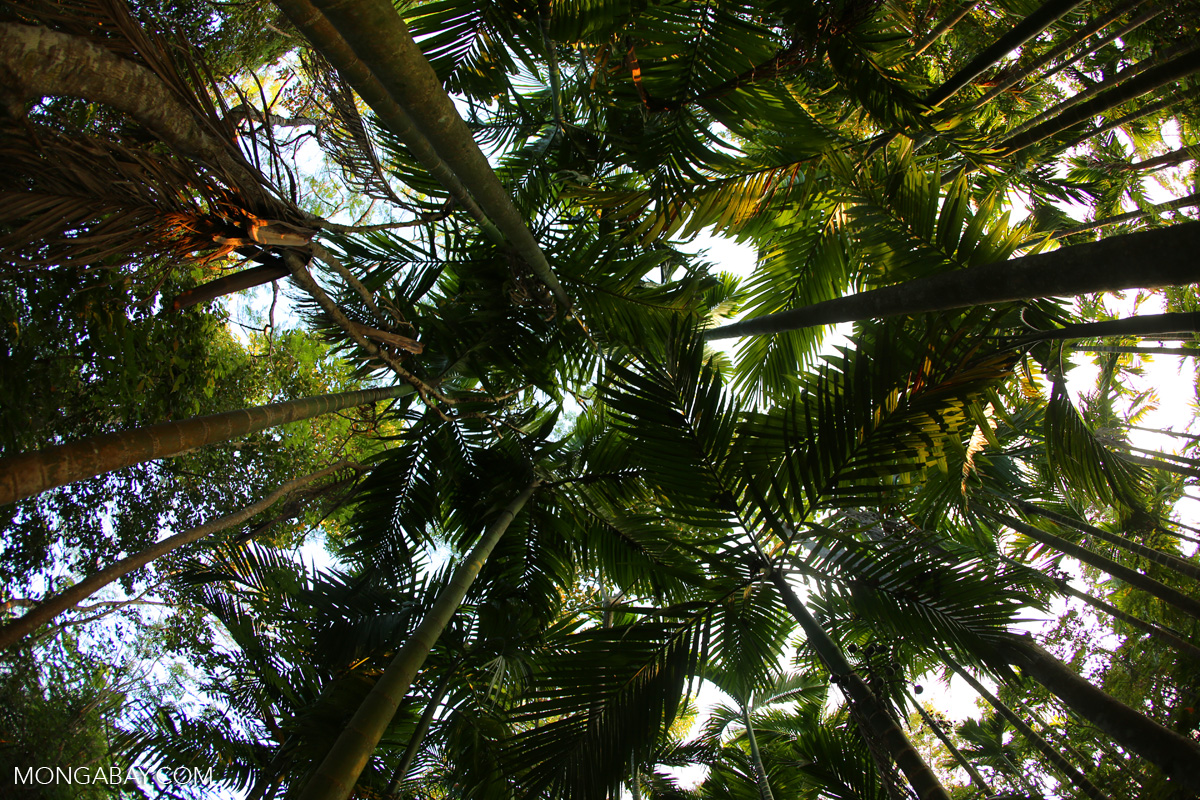- In the Paris agreement, most developing countries identified agroforestry as a key part of their climate strategy.
- Nationally Determined Contributions, or NDCs, are the main tool for defining countries’ contributions to the Agreement.
- The World Agroforestry Centre (ICRAF), just released a policy brief on agroforestry’s central role in governmental efforts to achieve their NDCs.
- Author Peter A. Minang explains how agroforestry’s contribution to climate goals could be enhanced.
The Paris Agreement, reached at COP21 in December 2015, aims to keep global temperature rise this century to well below 2 degrees Celsius above pre-industrial levels. Nationally Determined Contributions (NDCs) are the main tool for defining countries’ contributions to the Agreement, and most developing country NDCs identified agroforestry as a key part of their climate strategy.
The World Agroforestry Centre (ICRAF) is attending the COP23 climate summit in Bonn, Germany, and just released a policy brief on agroforestry’s central role in governmental efforts to achieve their NDCs. Report coauthor Peter A. Minang took some time to explain how agroforestry’s contribution could be enhanced.
AN INTERVIEW WITH PETER MINANG
Giovanni Ortolani for Mongabay: How is agroforestry represented in current NDC ambitions?
Peter Minang: Agroforestry is largely represented as an integral part of climate smart agriculture and landscape restoration. More than 90% of countries cite agriculture as a key part of their NDCs. Moreover, tropical forest countries also cite agroforestry as integral to their strategies for reducing emissions from deforestation and forest degradation, as well as for sustainable intensification and ecological agriculture in areas adjacent to forests.
Mongabay: What is the emission reduction potential of agroforestry?
Peter Minang: Agroforestry currently covers about one billion hectares globally. We estimate that agroforestry is currently holding the equivalent of up to 20 years of emissions from deforestation (i.e. up to 34 petagrams of carbon or Pg C). This is perhaps the highest potential for carbon neutrality within the agricultural sector.

Mongabay: How can agroforestry help farmers adapt to the impacts of climate change and greater climate variability?
Peter Minang: Increasing ecosystem services, such as generating microclimates in communities, especially settlement areas; increasing water holding capacity; increasing soil carbon; and improved soil fertility and therefore food production, is probably the main opportunity. A combination of these services can make a big difference in high rainfall variability and semi-arid areas. The second major pathway to adaptation is through diversification and stability of incomes that accompanies the introduction of trees on farms. Trees are less affected by rainfall seasonality and therefore able to provide relatively consistent incomes and food sources which in turn makes farmers both less vulnerable and more resilient.
Mongabay: What are the main challenges to agroforestry adoption?
Peter Minang: Agroforestry is a highly knowledge dependent activity. Knowing the right tree, good quality germplasm and how to manage trees for best results is a major determinant of success. With agroforestry, the waiting period needed before beginning production is longer than that for annual crops which poses a major handicap. Investment requirements, in terms of both cash and time in the early years of planting, are also major challenges. Most farmers, especially those in developing countries, do not have the luxury of disposable income for the typical three-year waiting period. ICRAF and its partners are working to significantly reduce the time required through improved techniques intended to induce fruiting as early as possible. This might help solve a great deal of these challenges.

Mongabay: ICRAF’s recently release Policy Brief says that agroforestry takes on average 3–5 years before delivering benefits. How can financial institutions, governments, or the private sector help farmers during this early phase?
Peter Minang: Creative blended finance approaches offer some solutions. The recognition that some public finance might be needed in the early phases to promote agroforestry is important. Such investments can be justified by the fact that agroforestry would help increase productivity and employment, as well as adaptation by people, and resilience in agroecosystems. Furthermore, public investments can de-risk investments in agroforestry at landscape scale, thereby allowing for impact investments or private sector engagement. We are currently experimenting with this kind of public investment approach in Cameroon through our Dryad project, which is showing very interesting early results.
Mongabay: What are the knowledge demands of agroforestry, and how can farmers in the tropics know the right trees and crops for their land?
Peter Minang: In times like these, when climate change effects are manifesting and affecting the growing niches of various tree species, farmers need to know what species best fit both current and future climatic conditions. To support farmers in this regard, ICRAF is engaging in promoting Rural Resource Centers (RRCs) in collaboration with national and local partners in different countries, including Cameroon and Ethiopia. The RRCs serve as the learning medium for farmers on appropriate technologies. ICRAF is also harnessing digital opportunities by developing apps that extend to a majority of farmers via their mobile phones. Recently ICRAF released the Africa Tree Finder app which helps farmers identify what trees could grow in their locality for a specified purpose. It is currently available in Kenya and Uganda and efforts to cover more countries is ongoing.

Mongabay: What is the relationship between land tenure and agroforestry?
Peter Minang: Given that agroforestry is a medium to long-term investment, clear land tenure is a requirement for any investment. Beyond land tenure is the need for unambiguous tree rights, that is the right to products and services from trees. Interestingly, in some places trees are also used as a means of securing the rights to land, especially where demonstrated first occupancy secures rights to land in traditional customary rules. Hence agroforestry, once established, can be an indicator of tenure stability compared to other annual crop-based land uses. This has the potential to make agroforestry attractive to investments if sufficiently de-risked.
See Mongabay’s whole series on agroforestry here.
Banner image: Rubber and coffee grown together in China. Photo by Rhett Butler for Mongabay.
